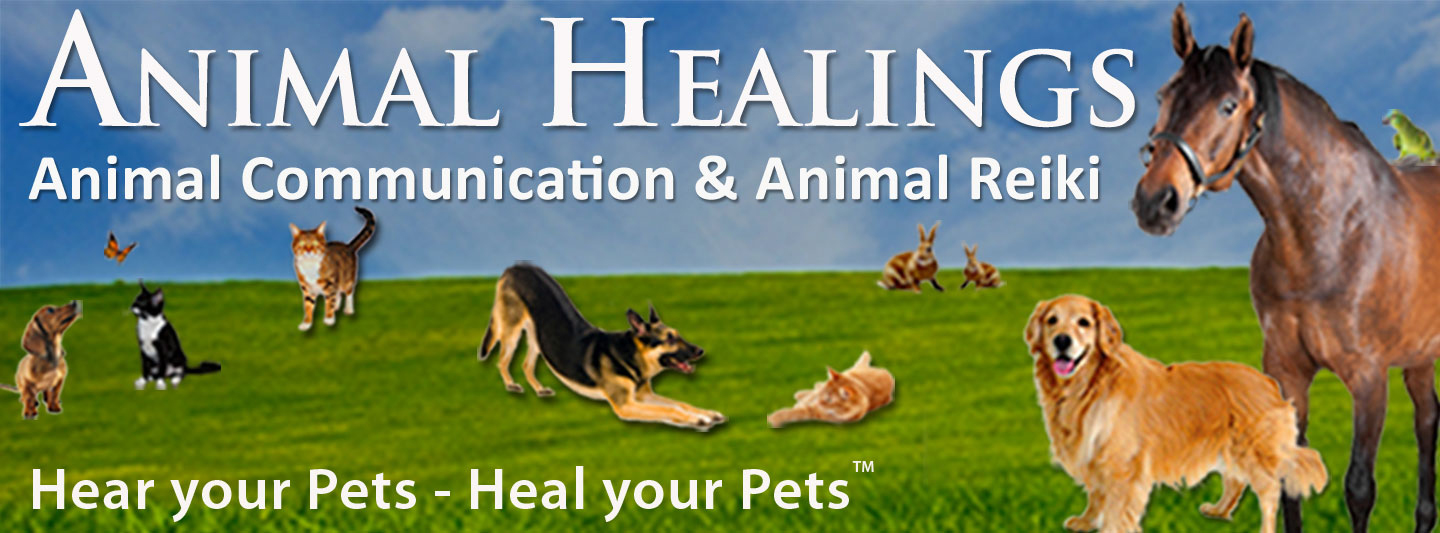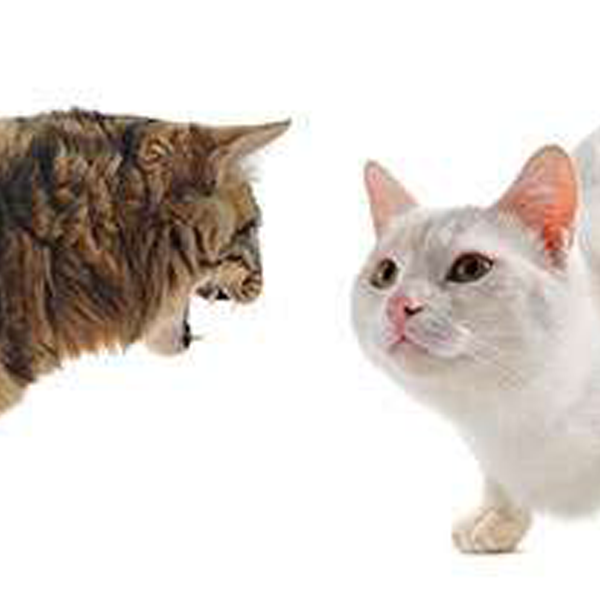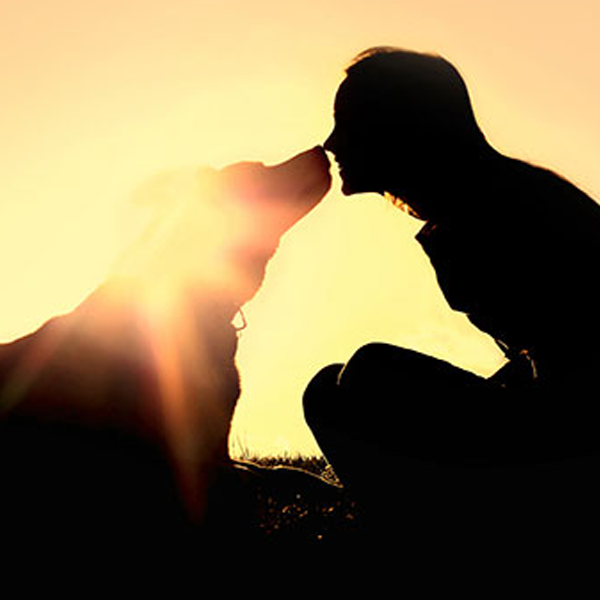Article: Solving (Redirecting) Displaced Aggression in Dogs, Cats and Other Pets
Animal Communication Can Be Your Best Tool in Finding Out What is Causing Displaced Aggression in Dogs, Cats, Horses and Birds.
By: Thom Williams, Animal Healings, Animal Communication & Animal Reiki Master
Often it occurs when pets cannot take power over an animal or situation that is causing them stress. This can be as simple as another animal walking through their own yard or " territory " while they are kept indoors or within a fenced area.
As they are barking, growling, hissing, calling or communicating by other means (such as telepathically) to tell the intruder to go away and the intruding animal ignores them or replies back with foul remarks, noises or actions, your pet gets angry and frustrated. These can be just some of the factors that creates displaced aggression conditions for your pet. These are just a few of the things leads to displaced aggression in dogs, cats, and just about any other pet or animal.
Pet Patterns When Frustrated

It can be represented in many ways by pets, not just sudden "out of the blue" barking, growling or biting family pets or human members. Possessive and territorial behaviors, destructive patterns, and even self-mutilation are among some of the other patterns that can happen when a pet can't vent their frustration over an event that is taken place that they have no control over.
Animals communicate through telepathic channels, and many things can be said back and forth through a pane of glass, or from a vast distance. It doesn't have to be just a stray dog or cat crossing your yard, it can be a squirrel, a raccoon or even a rouge opossum that you have never noticed. (See ourarticle about Animal Communication and Wild Life Cameras) Displaced aggression can take place even several days later when you least expect it and by then it's extremely difficult to make any physical connections to events that may be bothering your pets.
Play a displaced aggression video clip sample and see just how fast a displaced aggression event can happen without you even knowing it.
The Frustration Goes Somewhere
When this frustration of not being able to handle this situation builds up in the subconscious of your pet, they eventually will have to vent the anger by taking it out on you, your family or your pets, very often they aren't even aware of this action as it occurs. They can be just as surprised and stunned by the whole event as we are. You will usually see a reaction in them that they don't realize what they have done in this behavioral reaction. Very often after the displaced aggression event has occurred you can clearly see guilt, sadness and confusion on their face.
When some pets come into a new household they may have issues finding their place within the established animal hierarchy. Besides all the normal dynamics pets may encounter, like multi household species and gender issues, they have to find their way within seniority among other pets. You can find yourself in the midst of a jealously battle among all your pets even though you've done all the proper introduction techniques.
Things can also just happen between pet personalities, and some pets (and breeds) can come pre-disposed with issues. Others may have a known or unknown traumatic background / history carried with them before they stepped one cute furry paw into your loving household. Even pets that come from a well adjusted household can have issues arising from litter-mates and from the way they were handled by their birth parents. With all the best of loving intentions everyone in your house can have in welcoming your new pet, there can still be a pet within your home that develops a jealous streak or aggressive "ownership" nature over a pet, an object, or even a particular prized area within your home which eventually leads to displaced aggression.
More Photographic Proof!
During a recent animal communication session, Thom Williams of Animal Healings had relayed to a client that their cat (suffering from classic displaced aggression symptoms) described two intruders in the yard. As they say on TV...Later that night! Our client setup a motion activated wildlife cam.

First our client caught the "stinky" creature their cat described in the animal communication session.

Then their Wildlife Camera caught the "tabby" cat described coming up to the same spot on the porch! All within 24 hours of our Displaced Aggression Animal Communication session!
Gently Helping Pets With Traumatic Injuries (PTSD)
In other situations you may need to gently help a pet that has come through emotional events that can trigger memories of previous abuse or trauma. Like humans, pets can suffer from Post Traumatic Stress Disorder (PTSD) which can cause them to respond in a number of behavioral ways. One of the common reactions in PTSD is displaced aggression, although it's certainly not the only reactive behavior. Very common things in a pet's daily new home life can trigger a PTSD memory. We have seen cases where smells, sounds or music, colors or light, sometimes even clothing on people, like a particular type of hat have triggered a memory.
Pets' minds work similarly to human minds when it comes to trauma- based injuries. Sometimes they remember very vividly the trauma they suffered and perhaps the people or elements that caused it, and avoid those situations again at all costs. Other times the trauma was so great it's buried deep in their subconscious and this triggers unusual behaviors that they don't even realize they are doing - such as displaced aggression.
Of course providing plenty of love and understanding is essential in any behavioral training and counseling situation with pets. When one of the pets is trying to establish domination it's important to be careful that while you're being supportive and loving, you don't allow yourself to become the submissive target of their demands and eventually dominated by their behaviors. You must retain leadership by establishing ground rules and making sure all family members in the house abide by them. This is key to not sending confusing signals and be sure to send love all the pets equally. As we say in our household, "everyone is loved equally, but differently."
The first key to helping a pet with any behavior issues is by not assuming they are just an aggressive animal and punishing them, which just makes the whole situation escalate. But providing plenty of love and understanding when these situations happen you can help reduce the behavior significantly.
Animal Communication Helps Uncover Your Pet's History
Animal communication can help you find out the history of your pet and where some unknown trauma may have occurred before you became acquainted with your pet. Events can also happen when you aren't home, like lighting and thunder storms, neighbors making sudden loud noises, kids and pets creating situations in your yard, big machinery working in the street. Your pet's view of our human world can often be very different than you realize until you talk to them through the work of a professional animal communication. A communicator who is trained in helping a pet through trauma can gently work with them to find the causes and help guide you to solutions. Gaining their trust through communication is paramount. Sometimes just being aware of what triggers your pet's aggression is half the battle.
What Can You Do to Help?

A great (and fun) way to help a pet work through their displace aggression issue(s) is with a 'therapy attack toy'. A therapy attack toy is a stuffed animal that they can safely take their anger and frustrations out on in an interactive manner with your direction. You will be able to help your pet work through their aggressive modes and calm down without hurting you, your family members or pets as they work through issues.
There are several conditions that should be followed very carefully for this to be safe and effective:
- Use a stuffed fur toy slightly smaller than the pet, approximately 20% smaller body size than your pet's current size. It should also be big enough to protect your fingers and hands as you gently engage your pet with it.
- Check that the artificial fur cannot be pulled off by your fingers so that your pet will not swallow or tear fur as it plays with or attacks it's foe.
- Name this stuffed toy with a silly pet name "Pinky" or whatever, and get your pet use to the exercise as a good and welcomed behavior towards only this toy as a target for the aggression. When they attempt to bite you or any family members (including other pets) calmly explain that is not accepted and redirect them to "Pinky".
- When you start to see the tell tale signs of aggression coming on, reach for the toy and engage them in play with the toy, make it a fun and invigorating workout.
- Always be gentle in your approach, even though you want your pet to be aggressive toward the toy. Your pet should never feel threatened by the toy, but rather empowered.
- Never use the toy to touch your pet's face, and preferably approach with the toy being below or at the same level as your pet, never from a dominant position above the pet.
- Pay attention to your pet's cues and stop when they tell you they are done. Don't use the therapy attack toy to annoy your pet when they've got their aggression out of their system.
- Reward them with lots of love and praise after they have had a "cooling off" period.
We like to say nice things when we use the toy, like "Pinky's going to kiss you" and then gently use the stuffed animal to "kiss" our cat's feet, butt, or side to encourage her to attack it safely. Our cat knows that "Pinky" loves to help her feel better.
One session can alleviate their aggression, but if the stimulus for their aggression is ongoing, then plan to give them frequent sessions as they need it. As time goes by you'll get better at recognizing your pet's telltale pre-attack warning signs - dilated pupils, fluffed or cocked tail, a certain way they hold their ears back, low growls, and so on. You'll have the therapy attack toy ready before an attack and reduce the stress of the whole situation on the entire family. Other helpful aides for PTSD in pets include FES' "Post-Trauma Stabilizer" flower essence combination.
Hear your pets - heal your pets ™
Comprehensive Services
Schedule Your Animal Communication / Reiki Session
We work with any species of animal or pet with convenient animal communication by phone and distance Animal Reiki sessions, no matter where you are located. Your animal family gets to stay in the comfort of their home.
Testimonials
"We are ever so grateful to you for your healing touch and believe you saved her life." Read Animal Reiki Testimonial Lisa & Jim P, Orlando, FL

It was the first time the steroid really wasn't enough. Without Thom's amazing Reiki healing, I was afraid she wasn't going to get better this time.I have an incredible resource in Thom to turn to anytime Lilly's asthma gets worse. Read more of Animal Reiki Testimonial Julie R, San Antonio, TX

"I cannot thank Thom enough. He helped me understand what was happening to Sanna. She was very sick and was readying herself...." Read all of end of life / pet loss grief support animal communication testimonial Alane L, Streamwood, IL

We have had problems with Zeek jumping on us and visitors whenever we would walk through the front door. Now, Zeek has not jumped on anyone! I still can't believe it. Read More about pet behavior problem solved Animal Communication testimonial Teresa, Ft. Myers, Florida

"Both Nikki and I were relieved" Read More animal communicator testimonial Martha of San Francisco, CA

"...we could see progress in Lily's behavior and she could understand what it felt like to be part of a loving family." Read more of Pet behavior animal communication testimonial S Phillips, State College, PA

Reiki Music - 10 Song Album
by Thom Williams - Energy Healing in Rock/Jazz Music






